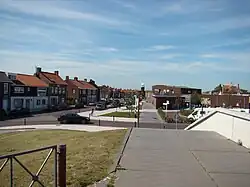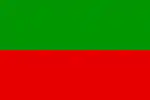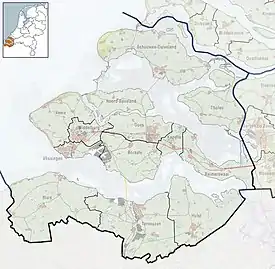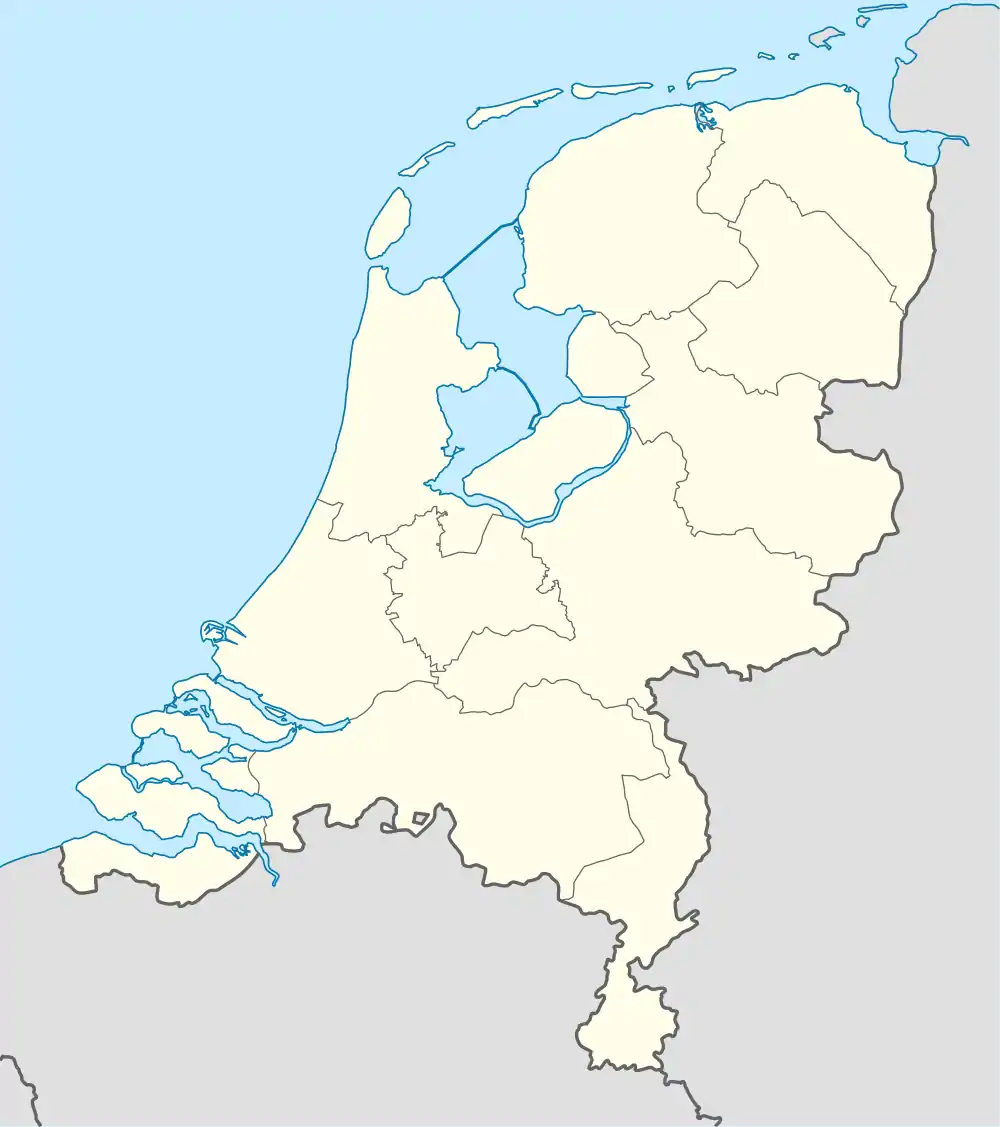Breskens | |
|---|---|
Harbour town | |
 The promenade of Breskens | |
 Flag  Coat of arms | |
 Breskens Location in the province of Zeeland in the Netherlands  Breskens Breskens (Netherlands) | |
| Coordinates: 51°23′42″N 3°33′25″E / 51.39500°N 3.55694°E | |
| Country | Netherlands |
| Province | Zeeland |
| Municipality | Sluis |
| Area | |
| • Total | 14.23 km2 (5.49 sq mi) |
| Elevation | 2.8 m (9.2 ft) |
| Population (2021)[1] | |
| • Total | 4,630 |
| • Density | 330/km2 (840/sq mi) |
| Time zone | UTC+1 (CET) |
| • Summer (DST) | UTC+2 (CEST) |
| Postal code | 4511[1] |
| Dialing code | 0111 |
Breskens is a harbour town on the Westerschelde in the municipality of Sluis, Netherlands. Its population is 4,787 (as of 2010).
The town is noted for the Visserijfeesten (Fishery Festival), the largest festival in Zeeland.
A ferry connection exists between Breskens and Vlissingen. After the opening of the Western Scheldt Tunnel near Terneuzen in 2003, the ferry now only carries pedestrian and bicycle traffic.
Sights
The lighthouse of Breskens is the oldest remaining cast-iron lighthouse in the Netherlands. It was built in 1867 and became a monument in 1982.
History
_p523_BRESKENS.jpg.webp)
In early 1487 Maximilian I, Holy Roman Emperor, granted the coastal region of the Scheldt as a fief to Philip of Cleves. The coastal areas were drained and the village of Breskens was founded in 1510.
On 14 May 1940, with the German army approaching, the Dutch government fled to London. Queen Wilhelmina initially ordered the British captain removing her from The Hague to set sail for Breskens from where she wished to lead the resistance against the invading armies. One of the reasons was that Breskens, having two fortresses in the vicinity, could be well defended. She was advised by the captain that he was under orders not to make contact with the Dutch shore as it was under heavy air attack, so Wilhelmina took the decision reluctantly to go to Britain, planning to return as soon as possible.
On 11 September 1944, during Operation Switchback, the town was carpet-bombed by Allied forces, leaving very little of the historical centre intact. After the war, the town was rebuilt and became a centre for the Dutch fish industry and other maritime-related businesses.
In the nineties, with the fish-industry in terminal decline, tourism became the main economic focus and a number of high-rise apartment blocks were built on the waterfront.
Prior to 1 January 2003, the town was incorporated in the municipality of Oostburg.
Gallery
 The harbour of Breskens
The harbour of Breskens Street view in the rain
Street view in the rain Bandstand
Bandstand The beach of Breskens with Vlissingen in the background
The beach of Breskens with Vlissingen in the background
References
- 1 2 3 "Kerncijfers wijken en buurten 2021". Central Bureau of Statistics. Retrieved 21 April 2022.
- ↑ "Postcodetool for 4511AA". Actueel Hoogtebestand Nederland (in Dutch). Het Waterschapshuis. Retrieved 21 April 2022.
- "Geschiedenis van Breskens 1610-1825" (in Dutch)